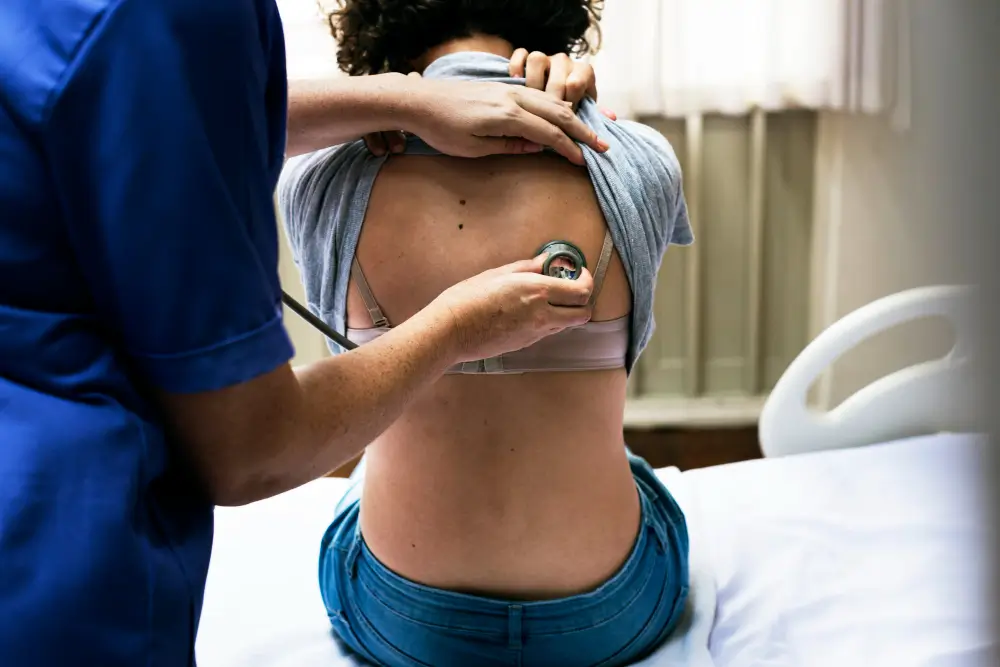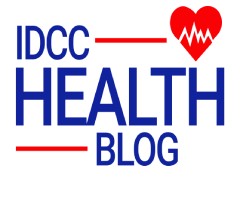Is Postural Orthostatic Tachycardia Syndrome Genetic?
If you’ve ever experienced dizziness, a racing heartbeat, or fatigue that seems to strike out of nowhere, you might have heard of postural orthostatic tachycardia syndrome. But here’s the question that puzzles many: is postural orthostatic tachycardia syndrome genetic, or does it develop for other reasons? The answer isn’t as straightforward as you might think—and it could reveal more about your health than you realize.
TL;DR
Postural Orthostatic Tachycardia Syndrome (POTS) may have a genetic component, but most cases are not inherited. Rare mutations—such as in the norepinephrine transporter gene (SLC6A2)—and familial patterns suggest a hereditary influence, especially when associated with disorders like Ehlers-Danlos or osteogenesis imperfecta. However, environmental and physiological factors such as dehydration, heat, stress, and hormonal changes often worsen symptoms. Diagnosis is typically handled by cardiologists or neurologists, not geneticists, except in rare hereditary cases. Managing POTS focuses on symptom control, identifying triggers, and lifestyle adjustments rather than genetic testing.
Visit a POTS specialist NYC to discuss genetic testing for POTS

How Does Genetics Influence Postural Orthostatic Tachycardia Syndrome?
Genetics can play a role in the development of POTS, although most cases are sporadic. In some people, specific genetic alterations or inherited variations may make the body more likely to develop this condition, while in others, environmental or physiological factors may trigger symptoms without a clear genetic component.
Specific genetic mutations
In rare cases, POTS may be caused directly by a genetic mutation that affects the body’s ability to regulate norepinephrine levels—a substance that helps maintain stable blood pressure and heart rate when standing. This leads to an abnormal response in the autonomic nervous system, resulting in tachycardia upon standing.
Although most cases do not have a direct genetic cause, variations and mutations in certain genes may increase susceptibility to the disorder. Recognizing the genetic influence helps explain why some people develop POTS and can guide future research toward more personalized treatment approaches.
Learn About Postural Orthostatic Tachycardia Syndrome
This condition affects the autonomic nervous system, which regulates automatic body functions such as heart rate, blood pressure, and blood circulation. In people with POTS, when standing up, blood tends to pool in the veins of the legs, reducing blood flow to the brain.
Main symptoms
Symptoms usually appear or worsen when standing and can vary in intensity.
The most common include:
- Dizziness or feeling faint
- Palpitations or a rapid heartbeat
- Persistent fatigue
- Weakness or low energy
- Blurred vision or a feeling of lightheadedness
These symptoms generally improve when lying down or elevating the legs, which helps blood flow back to the brain.
POTS can be challenging, but most cases have a positive outlook. With medical treatment, lifestyle adjustments, and consistent follow-up, many people stabilize their heart rate and regain daily well-being.
Examine the Genetic Factors in POTS
While there isn’t a single gene responsible for this syndrome, evidence suggests that genetics may influence its onset and development. Some cases show a family tendency, indicating that certain hereditary factors can increase susceptibility to the disorder. Most cases have no clear cause, but genetic predisposition and biological sex appear to be relevant factors.
Genetic influence in POTS
- There isn’t a single gene responsible, but there is a genetic and familial predisposition.
- It occurs more frequently in people with close relatives who are also affected.
Identified genetic subtype
- Norepinephrine Transporter Deficiency POTS (NET):
- A mutation in the norepinephrine transporter gene causes an accumulation of norepinephrine in the blood, leading to tachycardia when standing.
Related genetic disorders
- Ehlers-Danlos Syndrome (EDS): Affects connective tissue and vascular elasticity.
- Osteogenesis imperfecta: Alters collagen and may influence circulatory function.
Dysautonomia and nerve regulation
- POTS is a form of dysautonomia, a condition that alters autonomic nervous system function.
- Genetic factors can affect nerve signaling and the regulation of blood pressure and heart rate.
Mutations in the norepinephrine transporter gene, along with the presence of other genetic disorders, support the idea that genetics can alter the autonomic nervous system’s regulation. Identifying these factors can help develop more personalized approaches for diagnosis and management.
Investigate Familial Cases of POTS
The study of family cases offers valuable clues about the possible role of genetics in the origin of POTS. While most diagnoses are sporadic, some records show multiple affected members within the same family, suggesting a hereditary predisposition that could influence the onset and development of the condition.
Having a family history of POTS or related disorders can increase the risk of developing the syndrome. These conditions often share genetic changes that affect connective tissue, cardiovascular function, and the autonomic nervous system.
Family risk factors:
- Family history of orthostatic intolerance or recurrent fainting
- Relatives diagnosed with POTS or other autonomic nervous system disorders
- Presence of genetic syndromes such as Ehlers-Danlos that affect blood flow and blood pressure regulation
Most patients do not have a family history, but when several relatives are affected or when hereditary disorders are present, genetics may play an important role in making the autonomic nervous system more vulnerable.
Consider Other Contributing Factors to POTS
Many factors can contribute to the onset or worsening of POTS symptoms. These elements do not necessarily cause the condition but can influence how often and how severely symptoms appear, affecting daily well-being.
Certain physiological, environmental, or lifestyle factors can worsen POTS symptoms or trigger stronger episodes.
| Factor | Effect on POTS |
| Dehydration | Loss of fluids lowers blood volume, increasing tachycardia and dizziness when standing. |
| Heat | High temperatures dilate blood vessels, leading to more blood pooling in the legs. |
| Menstrual cycle | Hormonal changes can affect blood pressure and heart rate, worsening symptoms. |
| Physical exercise | Intense or prolonged activity may increase fatigue and dizziness. |
| Large meals | Heavy meals, especially high in carbohydrates, can redirect blood flow to the digestive system and intensify symptoms. |
| Alcohol and caffeine | Alcohol causes dehydration and can lower blood pressure, while too much caffeine affects heart rhythm and the autonomic response. |
| Stress | Physical or emotional stress can heighten symptoms due to activation of the sympathetic nervous system. |
In addition to external factors, POTS may be associated with other conditions that affect the nervous or circulatory system, such as:
- Autoimmune diseases
- Diabetes
- Alcoholism
- Heavy metal poisoning
- Prolonged inactivity
These conditions can disrupt blood flow, blood pressure, or nerve function, increasing susceptibility to POTS or worsening its progression.
Effective management involves identifying and controlling aggravating factors. Healthy habits, avoiding triggers, and staying well-hydrated can reduce how often symptoms occur.
Consult with a Genetic Counselor for Risk Assessment
While this syndrome may have a genetic component in some cases, seeing a genetic counselor is not necessary for diagnosis or initial evaluation. Diagnosis and management are primarily carried out by medical professionals specializing in the cardiovascular or nervous systems.
POTS is a disorder of the autonomic nervous system, which regulates involuntary functions such as heart rate and blood pressure. In this condition, the system does not respond properly to changes in body position, causing an abnormal increase in heart rate when standing and symptoms like dizziness, fatigue, or palpitations.
- Initial evaluation: Diagnosis is usually made by a primary care physician, cardiologist, or neurologist based on medical history, a physical exam, and tests such as the tilt-table test, which measures changes in blood pressure and heart rate while standing.
- Role of a genetic specialist: A geneticist is only involved in very specific cases—when there is a family history of rare hereditary diseases, such as osteogenesis imperfecta or connective tissue syndromes. These situations represent a small percentage of all POTS cases.
In most cases, management focuses on clinical symptoms and autonomic function. A cardiologist or neurologist is best suited to guide diagnosis, adjust treatment, and decide whether a genetic consultation is necessary.
Key Takeaways
- POTS overview: Postural Orthostatic Tachycardia Syndrome (POTS) affects the autonomic nervous system, causing dizziness, rapid heartbeat, and fatigue when standing due to poor blood flow regulation.
- Genetic influence: While most POTS cases are not inherited, genetics may contribute. Rare mutations—like those in the norepinephrine transporter gene (SLC6A2)—and familial patterns suggest a hereditary component.
- Related genetic disorders: POTS is sometimes linked to conditions with genetic origins, such as Ehlers-Danlos syndrome and osteogenesis imperfecta, which affect connective tissue and vascular regulation.
- Familial trends: Some families show multiple members with POTS or similar autonomic disorders, supporting the idea of a possible genetic predisposition.
- Other contributing factors: Environmental and physiological triggers—including dehydration, heat, stress, hormonal changes, large meals, alcohol, and caffeine—can worsen symptoms.
- Associated conditions: POTS may co-occur with autoimmune diseases, diabetes, alcoholism, heavy metal poisoning, or prolonged inactivity.
- Diagnosis and management: Most diagnoses are made by cardiologists or neurologists using tests like the tilt-table test. Genetic counseling is rarely necessary unless there’s a strong family history of rare hereditary disorders.
- Treatment approach: Managing POTS focuses on symptom control, lifestyle changes, hydration, and trigger avoidance rather than genetic testing.
- Prognosis: Many individuals experience improvement or recovery over time with proper management and lifestyle adaptation.
FAQs
Is postural orthostatic tachycardia syndrome hereditary?
Postural Orthostatic Tachycardia Syndrome (POTS) isn’t usually hereditary, but genetics can play a role in some cases. Rare mutations—like those affecting the norepinephrine transporter gene (SLC6A2)—and familial patterns suggest that heredity may increase the likelihood of developing POTS. However, most cases occur sporadically, without a clear inherited cause.
Do POTS run in the family?
While most people with POTS don’t have a family history, there are documented cases where multiple family members are affected. This suggests that certain genetic or hereditary factors may contribute to susceptibility. Families with related genetic conditions—such as Ehlers-Danlos syndrome or osteogenesis imperfecta—may also have a higher risk of POTS-like symptoms.
Are you born with POTS or do you develop it?
You’re not typically born with POTS. Most people develop it later, often after events such as infections, hormonal changes, or periods of prolonged inactivity. While genetics may make some individuals more vulnerable, environmental and physiological triggers are usually what bring on the symptoms.
What is the root cause of POTS?
The exact cause of POTS isn’t fully understood. It’s believed to result from dysfunction of the autonomic nervous system, which controls heart rate and blood pressure. In some cases, genetic predisposition, autoimmune conditions, or connective tissue disorders contribute to this dysfunction. Other factors—like dehydration, heat, stress, and hormonal fluctuations—can worsen symptoms.
Sources
- Revlock, M. M. (2018). Postural orthostatic tachycardia syndrome. Am Nurse Today, 13(12), 18-21.
Home – American Nurse Journal
- Fedorowski, A. (2019). Postural orthostatic tachycardia syndrome: clinical presentation, aetiology and management. Journal of internal medicine, 285(4), 352-366.
https://onlinelibrary.wiley.com/doi/full
